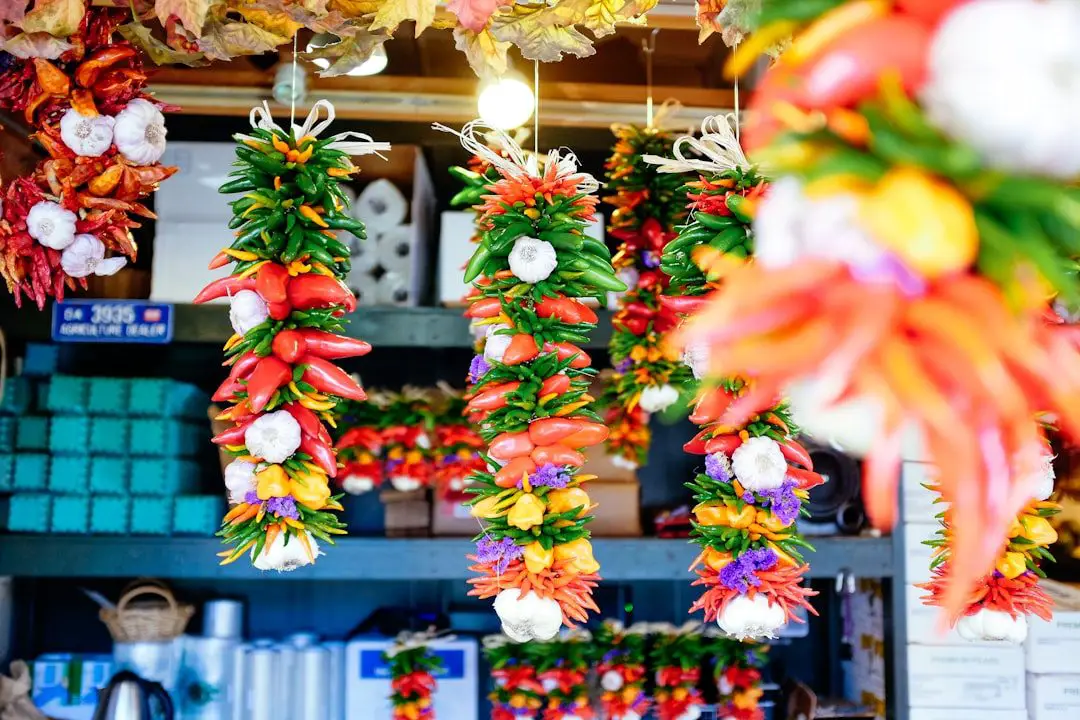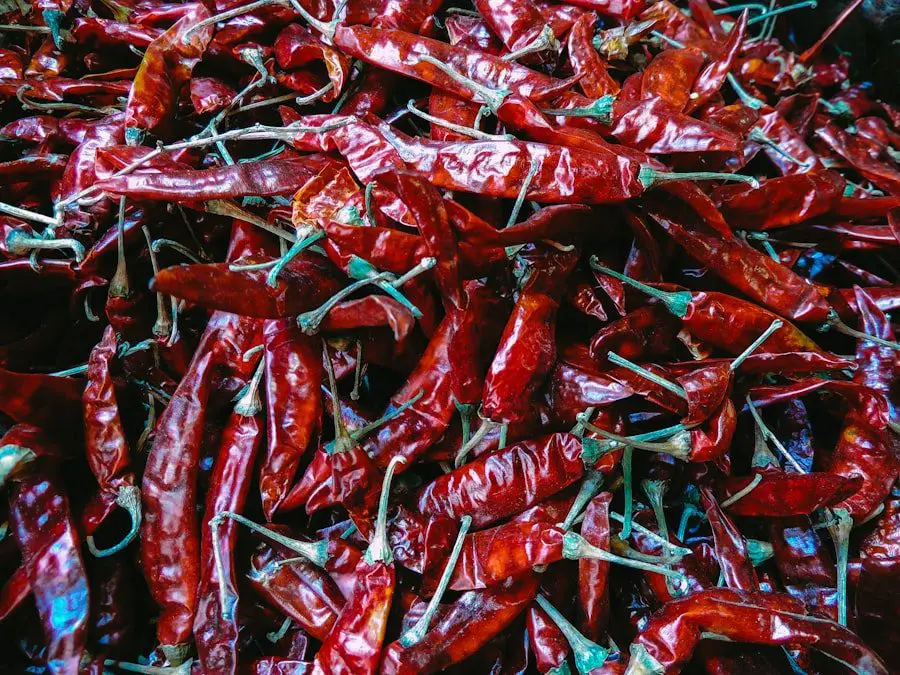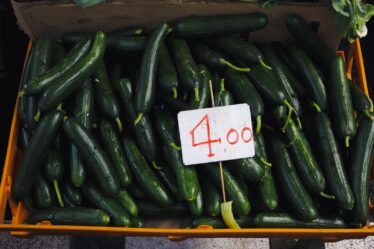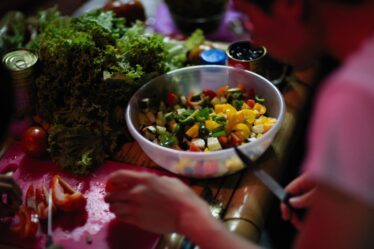
Dried chili peppers have a long and rich history in the culinary world. They have been used for centuries in various cuisines around the globe, adding heat, flavor, and complexity to dishes. The process of drying chili peppers dates back to ancient times, when people discovered that drying them preserved their flavor and allowed them to be stored for longer periods.
Dried chili peppers are an essential ingredient in many cuisines, including Mexican, Thai, Indian, and Chinese. They add a unique depth of flavor and heat to dishes, making them a staple in many kitchens. Whether you’re looking to add a subtle kick to a dish or create a fiery launching of flavors, dried chili peppers can do it all.
The versatility of dried chili peppers is one of their most appealing qualities. They can be used in a variety of ways, from adding heat to salsas and sauces to infusing oils and making rubs. Their flavor profile can range from mild and smoky to intensely hot and pungent, allowing you to tailor the level of heat to your preference.
Key Takeaways
- Dried chili peppers are a versatile and flavorful ingredient in cooking.
- There are different types of dried chili peppers with varying heat levels.
- To ensure optimal flavor and freshness, select and store dried chili peppers properly.
- Dried chili peppers are commonly used in Mexican and Asian cuisine for added heat and flavor.
- Dried chili peppers have health benefits such as boosting metabolism and immunity.
The Different Types of Dried Chili Peppers and Their Heat Levels
There are numerous types of dried chili peppers available, each with its own unique flavor profile and heat level. Some popular varieties include ancho, guajillo, chipotle, cayenne, and habanero.
The heat level of dried chili peppers is measured using the Scoville scale. This scale assigns a numerical value to each pepper based on its capsaicin content, which is responsible for the pepper’s heat. The higher the number on the Scoville scale, the hotter the pepper.
Ancho peppers are mild and slightly sweet, with a smoky flavor. They measure around 1,000–2,000 Scoville heat units (SHU). Guajillo peppers have a medium heat level, measuring around 2,500–5,000 SHU. Chipotle peppers are made from smoked and dried jalapenos, giving them a smoky and earthy flavor. They measure around 2,500–8,000 SHU.
Cayenne peppers are known for their fiery heat and measure around 30,000–50,000 SHU. Habanero peppers are one of the hottest chili peppers available, measuring around 100,000–350,000 SHU. It’s important to note that the heat level can vary depending on the growing conditions and the specific variety of the pepper.
Different types of dried chili peppers are used in various dishes to add heat and flavor. Ancho peppers are commonly used in Mexican cuisine to make salsas and sauces. Guajillo peppers are often used in Mexican moles and stews. Chipotle peppers are popular in Mexican and Tex-Mex dishes like chili con carne and adobo sauce. Cayenne peppers are used in many spicy dishes, including curries and hot sauces. Habanero peppers are often used sparingly due to their intense heat but can add a fiery kick to salsas, marinades, and jerk seasonings.
How to Select and Store Dried Chili Peppers for Optimal Flavor and Freshness
When selecting dried chili peppers, it’s important to choose high-quality ones to ensure optimal flavor and freshness. Look for peppers that are pliable and not brittle or overly dry. They should have a vibrant color and a strong aroma.
To maintain the freshness and flavor of dried chili peppers, it’s essential to store them properly. Keep them in an airtight container in a cool, dark place, away from moisture and sunlight. This will help prevent them from losing their flavor and becoming stale.
If you have whole dried chili peppers that need to be rehydrated before use, there are a few methods you can use. One method is to soak them in hot water for about 20 minutes until they become soft and pliable. Another method is to toast them in a dry skillet over medium heat until they become fragrant, then soak them in hot water. Both methods will rehydrate the peppers and make them easier to work with in recipes.
Using Dried Chili Peppers in Mexican Cuisine: From Salsas to Mole Sauce
| Recipe | Heat Level | Preparation Time | Serving Size |
|---|---|---|---|
| Salsa Roja | Medium | 15 minutes | 4-6 people |
| Salsa Verde | Mild | 20 minutes | 4-6 people |
| Mole Poblano | Hot | 2 hours | 6-8 people |
| Chili Rellenos | Mild | 1 hour | 4-6 people |
Mexican cuisine is known for its bold flavors and vibrant use of spices, and dried chili peppers play a crucial role in many traditional Mexican dishes. From salsas to mole sauce, dried chili peppers add depth, heat, and complexity to Mexican cuisine.
Salsas are a staple in Mexican cuisine, and dried chili peppers are often used as a base for these flavorful sauces. Ancho peppers are commonly used in red salsas, while guajillo peppers are used in green salsas. These peppers add a rich, smoky flavor and a mild to medium level of heat.
Mole sauce is another iconic Mexican dish that relies heavily on dried chili peppers. Mole is a complex sauce made with a variety of ingredients, including dried chili peppers, nuts, seeds, spices, and chocolate. The dried chili peppers used in mole sauce can vary depending on the region and the recipe but often include ancho, guajillo, and chipotle peppers. The combination of flavors creates a rich and velvety sauce with layers of heat and sweetness.
Other popular Mexican dishes that use dried chili peppers include pozole (a hearty soup made with hominy and meat), chiles rellenos (stuffed peppers), and tamales (steamed corn dough filled with various fillings). Dried chili peppers are also used in marinades for meats like carne asada and adobo sauce for grilled chicken or pork.
Adding Heat to Your Asian Dishes with Dried Chili Peppers: From Stir-Fries to Curry
Asian cuisine is known for its bold and spicy flavors, and dried chili peppers are a key ingredient in many Asian dishes. From stir-fries to curries, dried chili peppers add heat and depth to these flavorful dishes.
In Chinese cuisine, dried chili peppers are often used in stir-fries to add a spicy kick. Dishes like Kung Pao chicken and Mapo tofu rely on the heat of dried chili peppers to balance out the other flavors. Sichuan cuisine, known for its numbing and spicy flavors, uses a variety of dried chili peppers in dishes like hot pot and dan dan noodles.
Thai cuisine also incorporates dried chili peppers in many of its dishes. The famous Thai dish, Pad Thai, often includes dried chili peppers for added heat. Thai curries, such as red curry and green curry, use dried chili peppers as a base for their spicy and aromatic flavors.
Indian cuisine is known for its rich and complex flavors, and dried chili peppers are an essential ingredient in many Indian dishes. Dried chili peppers are used in curries, chutneys, and spice blends like garam masala. They add heat and depth to dishes like chicken tikka masala and vindaloo.
The Health Benefits of Dried Chili Peppers: Boosting Metabolism and Immunity

In addition to their culinary uses, dried chili peppers also offer several health benefits. They contain a compound called capsaicin, which is responsible for their heat. Capsaicin has been shown to have various health-promoting properties.
One of the most well-known benefits of capsaicin is its ability to boost metabolism. It has been shown to increase thermogenesis, which is the process by which the body burns calories to produce heat. This can help with weight management and may aid in weight loss.
Capsaicin also has immune-boosting properties. It has been found to have antimicrobial and anti-inflammatory effects, which can help support a healthy immune system. Additionally, capsaicin has been shown to have pain-relieving properties and may be beneficial for conditions like arthritis and neuropathy.
Other health benefits of dried chili peppers include improved digestion, increased circulation, and reduced risk of certain chronic diseases. They are also a good source of vitamins A and C, as well as antioxidants.
How to Prepare Dried Chili Peppers for Cooking: Soaking, Toasting, and Grinding
Before using dried chili peppers in recipes, they often need to be prepared to release their flavors and heat. There are several techniques for preparing dried chili peppers, including soaking, toasting, and grinding.
To rehydrate dried chili peppers, you can soak them in hot water for about 20 minutes until they become soft and pliable. This will make them easier to work with in recipes. You can also toast dried chili peppers in a dry skillet over medium heat until they become fragrant. This will enhance their flavor and add a smoky note to the dish.
Once the dried chili peppers are rehydrated or toasted, they can be ground into a powder or used whole in recipes. To grind dried chili peppers, you can use a spice grinder or a mortar and pestle. Grinding them into a powder will allow you to incorporate them more evenly into dishes and control the level of heat.
Creative Ways to Use Dried Chili Peppers: Infusing Oils, Making Rubs, and Pickling
In addition to using dried chili peppers in traditional recipes, there are many creative ways to incorporate them into your cooking. Infusing oils, making rubs, and pickling are just a few examples of how you can experiment with dried chili peppers.
Infusing oils with dried chili peppers is a great way to add subtle heat and flavor to dishes. Simply place dried chili peppers in a bottle of oil and let them steep for a few weeks. The oil will take on the flavors of the peppers and can be used in dressings, marinades, and sautés.
Making rubs with dried chili peppers is another way to add flavor and heat to meats and vegetables. Combine ground dried chili peppers with other spices like garlic powder, cumin, and paprika to create a flavorful rub. Massage the rub onto the meat or vegetables before cooking to infuse them with spicy goodness.
Pickling dried chili peppers is a popular method of preserving them and adding a tangy kick to dishes. Simply pack dried chili peppers into a jar and cover them with a mixture of vinegar, water, sugar, and salt. Let the peppers sit in the pickling liquid for a few days or weeks until they reach your desired level of tanginess.
Pairing Dried Chili Peppers with Other Spices and Ingredients for Complex Flavors
Dried chili peppers can be paired with a variety of other spices and ingredients to create complex and flavorful dishes. The key is to balance the heat of the chili peppers with other flavors to create a harmonious blend.
In Mexican cuisine, dried chili peppers are often paired with spices like cumin, coriander, and oregano. These spices complement the smoky and earthy flavors of the peppers and add depth to dishes like chili con carne and enchiladas.
In Asian cuisine, dried chili peppers are often paired with ginger, garlic, soy sauce, and sesame oil. These ingredients help balance the heat of the peppers and add layers of flavor to dishes like stir-fries and curries.
Experimenting with different flavor combinations is a great way to discover new and exciting dishes. Try pairing dried chili peppers with spices like cinnamon, cloves, and cardamom for a unique twist on traditional recipes. Or combine them with ingredients like honey, lime juice, and cilantro for a sweet and tangy flavor profile.
Dried Chili Pepper Recipes: Spicy Soups, Stews, and Marinades to Try at Home
Now that you have a better understanding of dried chili peppers and their versatility, it’s time to put that knowledge into practice. Here are a few recipes to get you started:
1. Spicy Black Bean Soup:
– Heat oil in a large pot and sauté diced onions, garlic, and diced dried chili peppers until fragrant.
Add black beans, vegetable broth, diced tomatoes, cumin, and oregano to the pot.
Simmer for 20 minutes until the flavors meld together.
Serve with a dollop of sour cream and a sprinkle of fresh cilantro.
2. Chipotle-marinated Grilled Chicken:
In a blender, combine chipotle peppers in adobo sauce, garlic cloves, lime juice, olive oil, salt, and pepper.
Blend until smooth.
Pour the marinade over the chicken breasts and let them marinate for at least 30 minutes.
Grill the chicken until cooked through, and serve with rice and grilled vegetables.
3. Thai Red Curry:
Heat oil in a large skillet or wok and sauté minced garlic, minced ginger, and diced dried chili peppers until fragrant.
Add red curry paste and cook for a minute.
Stir in coconut milk, fish sauce, sugar, and your choice of vegetables (such as bell peppers, broccoli, and carrots).
Simmer until the vegetables are tender.
Serve over steamed rice and garnish with fresh basil leaves.
These recipes are just a starting point for incorporating dried chili peppers into your cooking. Feel free to adjust the heat level by adding more or fewer dried chili peppers, depending on your preference. And don’t be afraid to experiment with different spices and ingredients to create your own unique dishes.
In conclusion, dried chili peppers are a versatile and flavorful ingredient that can elevate any dish. Whether you’re looking to add a subtle kick or a fiery launching of flavors, dried chili peppers can do it all. From Mexican salsas to Asian curries, there are countless ways to incorporate dried chili peppers into your cooking. So go ahead and spice up your meals with the heat and flavor of dried chili peppers!
If you’re a fan of spicy flavors, then you’ll definitely want to check out this article on chili pepper dried. Discover the intense heat and unique taste that dried chili peppers can bring to your dishes. From adding a kick to soups and stews to creating homemade hot sauces, dried chili peppers are a versatile ingredient that can elevate any recipe. Learn more about the different types of dried chili peppers and how to use them in your cooking by reading this informative article on Flavorful Sips: https://flavorfulsips.com/chili-pepper-dried-a-spicy-delight/.



